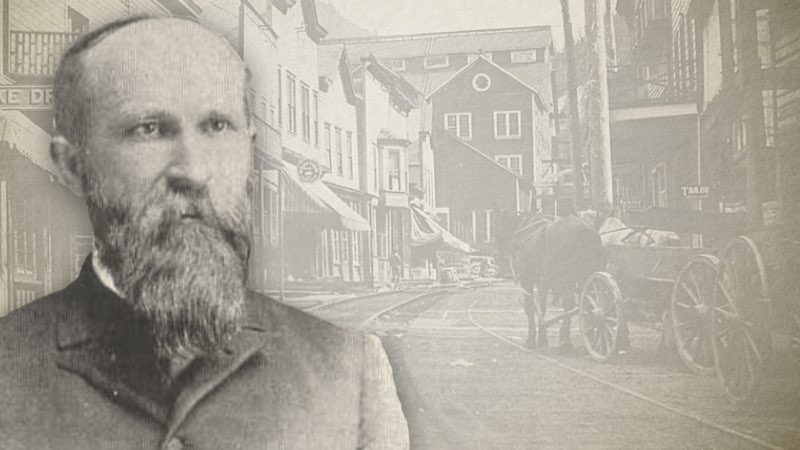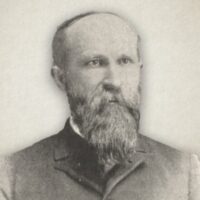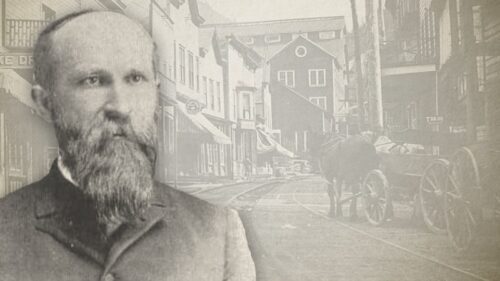
Chapter 14: Heresies and Persecutions (Continued)
It would seem that the indignities visited by a ruler upon one of his honored subjects, could not be greater than the one which has just been narrated, much less could it be perpetrated by one claiming, as does the pope, to be God’s vicegerent upon earth. Raymond VI., count of Toulouse, however, was subjected to a still more humiliating punishment.
The Albigenses abounded very largely in the territories of this count, and he extended to them his protection and patronage. He was even charged with having imbibed some of their views. This aroused the indignation of the Catholics against him, and he was excommunicated by the pope. Not long after this one of the inquisitors was assassinated, and Count Raymond was accused of being accessory to the crime. The Count protested his innocence, but the Catholic party was enraged, and in a little time an army of one hundred thousand crusaders was raised to march against him.
The Count was alarmed and offered to submit, promising obedience, and actually delivered into the hands of the pope seven fortified places in Provence. ”He submitted to the most humiliating penance. He repaired with his feet naked, and with only his shirt and trousers to the church at Notre Dame, at Paris, where a cardinal, after administering the discipline upon his naked back, conducted him to the foot of the grand altar, and on account of his humility and devotion, he pronounced absolution, on condition of fulfilling his treaty at Paris.” (Orchard’s Baptist History)
Mr. Jones states that “he was so severely whipped that he was unable to go out by the way in which he entered the church, but was forced to pass quite naked as he was, through the lower gate.” “O disgrace of Rome! O disgrace of human nature! For we can utter no reproach against Rome that does not recoil on man himself. Rome is human nature exalted in some of its worst propensities. We say this that we may speak the truth. We say it also that we may be just.”— D’Aubigne.
The church of Rome was now stagnant with pollutions, and there was no iniquity in which it had not steeped itself, and yet it claimed to be the church of Christ! Mr. Orchard says: “Luxury, covetousness, and adultery universally prevailed among the Catholic clergy. Prelates habited in purple robes and gold, converted nunneries into stews, and parks and mansions were had for seraglios. They were awfully wicked in Italy; cures and sinecures were provided for their children. Presbyters were common at twelve years of age and boys were bishops. We have seen that solicitude on the part of parents for the welfare of their offspring, with the Alexandrian school, first led to youths’ baptism. Infant pollutions were understood to be removed by water baptism, and the ordinance was the only means of saving the soul from purgatory. The importance now attached to baptism required the priest to attend every woman in labor, but the plan was further matured, by inventing various instruments and different distilled waters for the foetus in utero. Abortives and dead bodies received the sanctified liquid.”
A.D. I050. This was about the middle of the eleventh century. ”These corruptions were seen,” says Mr. Orchard, ”in the discovery of six thousand heads of infants in a warren near a religious nunnery, and until this exposing period the Catholics had baptized men, women and children in the fonts, quite naked, while others had their children disinterred and baptized in the Father’s name.”
This was about the middle of the twelfth century. A nunnery is no place for infants, and how these came there, only those who know how such things are carried on in Catholic countries, can surmise.
Just what good it could do to baptize a dead body, or one who is in a dying condition, only those who practice it can tell. Dr. Newman, a Methodist minister, sprinkled General Grant just before he expired, and while the General was in a comatose condition, using this formula: “I baptize thee, Ulysses Simpson Grant, in the name of the Father, Son and Holy Ghost.” Perhaps Dr. Newman, or some other prominent Methodist can tell us whether this was done in order to salvation. Only a few years ago a young lady in Georgia made a profession of religion and united with the Methodists. She was to have been baptized on the Sabbath following. In the mean time she took sick and died, and on the Sabbath she was buried. As her body lay in the coffin a Methodist minister pronounced the formula of baptism over her body and sprinkled it with water.
While we cannot and would not hold an entire denomination responsible for the erratic views and practices of a few, I ask is this doctrine of baptismal regeneration taught in Methodist theology, and how came they by it? Was it not because they came from the corrupt fountain of Romanism, and “can a corrupt stream send forth pure water?”
Mosheim tells us that in 1198, an effort was made to force baptism upon the Livonians, by the authority of Pope Innocent III. “The bishop marched into that province at the head of a powerful army which he had raised in Saxony, preached the gospel, sword in hand, and proved its truth by blows instead of argument. He was commissioned to dragoon the Livonians into the profession of Christianity, and oblige them by force of arms to receive the benefits of baptism.” What benefits, I ask, could come from baptism administered in this way?
A.D. 1600. In the year 1600, an effort was made by the Catholics to force Baptists to their communion. Accordingly the Catholic clergy secured from Uladislaus, king of Bohemia, much against his will, however, an edict prohibiting the Baptists from “holding any religious assemblies, public or private; commanded that their meeting houses should all be shut up; that they should not be allowed either to preach or print; and that within a given time they should all hold religious communion with either the Calixtines or Catholics.”
Mr. Ray says not long after the passage of this cruel edict, some of these Waldenses were committed to the flames, because they would neither commune with the Catholics, nor with those who did commune with Rome.
It has already been observed that the doctrine of transubstantiation originated in 780. In the twelfth century a belief of this doctrine was required, by the court of Rome, to be acknowledged by all men, and men fell down before the consecrated wafer and worshipped it as God. This act was as idolatrous as is the worship of a Hindoo idol. It made any one’s salvation depend upon his having partaken of what Catholics term the sacrament of the Lord’s Supper. Hence you hear of the sacraments of the Lord’s Supper and of Baptism. With Baptists these are not sacraments, and should never be so termed.
A.D. 1163. In 1163, we find that severe persecutions are visited upon the Albigenses in the South of France. Having been driven from Lyons by persecutions, the followers of Peter Waldo had spread all over this region, and fresh measures were adopted for their suppression. Accordingly a synod was convened at Tours, a city of France, at which all the bishops and priests in the country of Toulouse were strictly enjoined “to take care and to forbid, under pain of excommunication, every person from presuming to give reception, or the least assistance to the followers of this heresy; to have no dealings with them in buying or selling, that thus being deprived of the common necessaries of life, they might be compelled to repent of the evil of their way.”
A.D. 1194. These persecutions drove many of the friends of Waldo to seek homes in the valleys of Piedmont, while others proceeded to Bohemia, and still others to Spain. In the year 1194, in consequence of some of the Waldenses coming into the province of Arragon, says Jones, King Idlefonsus issued a severe and bloody edict, by which “he banished them from his kingdom and all his dominions, as enemies to the cross of Christ, profaners of the Christian religion, and public enemies to himself and kingdom.”
A.D. 1200. Mr. Jones says, notwithstanding these inhuman proceedings, both in France and Spain, that in the year 1200, both the city of Toulouse, and eighteen other principal towns in Languedoc, Provence and Dauphine, were filled with Waldenses and Albigenses.
Such was the influence of the pope of Rome over the crowned heads at this time, that they were powerless to afford any protection to their subjects, who held to the Albigensean or Waldensean faith, even if they had so desired. The pope himself was more powerful than all the emperors combined. Orchard says that “Louis VII., of France, and Henry II., of England, became equerries to the pope, holding the bridle of his horse, and afterwards walking, one on the one side of him, and the other on the other as royal grooms to his holiness.” Only think of it! One claiming to be a servant and minister of the meek and lowly Jesus, and one commanded by him to be subject to those in authority over him, requiring, or even permitting such acts upon the part of crowned heads!
I am here reminded of King David, when secluded in the cave of Adullam, three of his men came to him and “he longed and said, Oh that one would give me to drink of the water of the well of Bethlehem, which is by the gate. And the three mighty men broke through the hosts of the Philistines, and drew water out of the well of Bethlehem, that was by the gate, and took it and brought it to David; nevertheless he would not drink thereof, but poured it out unto the Lord. And he said, be it far from me, O Lord, that I should do this; is not this the blood of the men that went in jeopardy of their lives? Therefore he would not drink.”
How striking too, the contrast between the conduct of this haughty pope, and that of a colored Baptist preacher, who attended a convention of our white brethren in the South a few years ago.
When he arrived he was sick and burning with fever. He asked for a drink of water and some one brought him a refreshing draught. The colored preacher asked the name of the one who so tenderly ministered to his needs, and he was told that it was the governor of the State. The colored brother was so struck with this act of Christian love that he declared he would not drink it, but like David, he poured it out upon the ground, as he said, “as an oblation before the Lord.” Judge you between the pope of Rome and this humble man, which was the servant of God!
A.D. 1206. We have an account of a horrid massacre in the city of Beziers, by the Catholics, in the year 1206. Two hundred thousand “heretics” were massacred in a few months. These heretics were Albigenses, with their sympathizers. Afterwards the city of Beziers was besieged and taken, and the Catholics destroyed three hundred and twenty thousand lives, without regard to religious profession, age or sex, and afterwards destroyed the city by fire.
When the crusaders entered the city, knowing that there were many Catholics mixed with the heretics, they hesitated as to how they should act with regard to the former, and application was made to Arnold, the Abbe of Cisteaux, for advice. He instantly replied, “Kill them all—the Lord knoweth them that are his.”
A.D. 1209. In the year 1209, an army of from three to five hundred thousand men was raised to suppress the Waldenses, and salvation was offered to all who would engage in this war. And in 1216, an inquisition was established by Dominic, who called to his aid every civil magistrate and Catholic prince to take arms against the heretics (Waldenses) and “destroy their very memory.” They were commanded to brand, imprison, and subject the Waldenses to all manner of tortures. Dominic was made inquisitor general by the pope, and all this was done in the name of Christianity!
All Spain was now under the gloom of despotism and the shadow of the inquisition. Mr. Jones says that millions of persons were ruined by this horrible court. We thus see the Waldensean period gradually drawing to a close, and the true witnesses giving up their lives when they have testified.
A.D. 1224. In the year 1224, Frederick II., emperor of Koine, issued his edicts against Puritans, Paterines, Lyonists, Arnoldists, Albigenses, Waldenses, etc. These people were condemned by Frederick to perpetual infamy, and his curses even fell upon, their children. No one was allowed to answer for them, but they must be compelled to answer for others. They were not allowed to make a will, or to own any property, and their houses were to be destroyed.
A.D. 1245. In the year 1245, we again find the pope manifesting his power, in an effort to deprive Frederick II., of Germany, of his crown. In this year, Pope Innocent IV., convened the famous Council of Lyons, concerning which the following inscription is preserved in the Vatican Library in Rome. “The thirteenth general council, and the first of Lyons: Frederick II. is there declared an enemy to the church and deprived of the imperial diadem.”
It was under this pope, Innocent III., that the two hundred thousand Albigenses were put to death, in the space of a few months, and his acts were so flagrantly wicked, that Mr. Jones calls him Satan incarnate.
Such was the state of Christianity, as I have described it, at the dawn of the reformation of the sixteenth century. On the one hand were the Waldenses, seeking retirement from their enemies in the valleys of Piedmont, and the secluded places in Switzerland, Germany and France, with their defenseless women and children, only asking that they might worship God in peace, without being molested. On the other hand was the triumphant march of Romanism, seeking to subject all men to its faith, or else bury them in eternal forgetfulness. One or the other of these people were the true witnesses of Christ. I ask the reader, in all candor, which one was it?
Author of the “Compendium Of Baptist History”. Please inform the Editor of the AHB (via the Contact page) if you have biographical information on this author. Thank you.
Shackelford on Baptist History (Complete)




